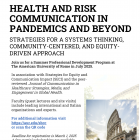La Notte di San Lorenzo occurs on 10 August.
One of Italy's most magical summer traditions falls on 10 August each year when Italians look to the night sky in the hope of catching a glimpse of a shooting star and making a wish.
The Night of St Lawrence, or La Notte di San Lorenzo as it is known in Italy, involves people gathering at viewing spots in parks, mountains or beaches, ideally away from the light pollution of cities.
Who was San Lorenzo?
Born in Spain on 31 December 225 AD, Lawrence or Laurence was a third-century Christian martyr who was one of the seven deacons in Rome under Pope Sixtus II.
According to legend, Lorenzo was burnt to death on 10 August 258 after being placed on a gridiron, as part of the persecution of Christians ordered by Roman Emperor Valerian.
The saint is remembered in Rome by the papal basilica of San Lorenzo fuori le mura which was built over the site of his martrydom.
What are the origins of La Notte di San Lorenzo?
The martyrdom of St Lawrence inspired numerous works of art over the centuries and, according to the writings of St Ambrose, the falling stars on 10 August evoke the burning coals over which the saint met his death.
The annual Perseid meteor shower from the comet Swift-Tuttle, which typically occurs in the days around the saint's feast day on 10 August, is known by some as the "tears of St Lawrence".
The meteor shower is expected to peak in the second part of the night between 12 and 13 August, however this won't stop the romantic tradition in Italy of stargazing on the night of San Lorenzo.
Best viewing points in Rome for La Notte di San Lorenzo
In addition to parks and beaches near Rome, some of the best places to look to the skies in the capital on 10 August include the Janiculum hill, Monte Mario and the laghetto in EUR.




















